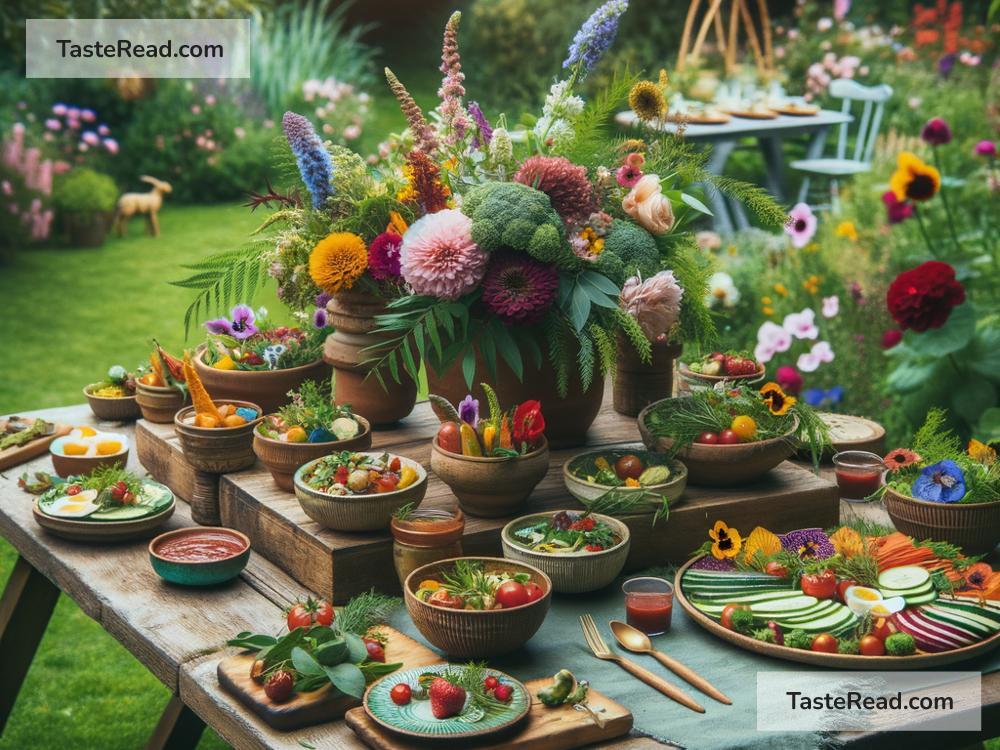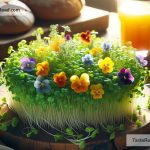Blooming Good Eats: A Beginner’s Guide to Using Edible Flowers in Sustainable Cooking
Imagine you’re sitting down to dinner, and on your plate is a dish that’s not just delicious and nutritious but also looks like a piece of art, thanks to the vibrant petals sprinkled on top. No, you’re not at a fancy restaurant; you’re experiencing the magic of edible flowers right at home! More than just a pretty garnish, these blooms can elevate your meals while reinforcing your commitment to sustainable living. Let’s dive into the world of edible flowers and discover how to use them in your kitchen to create dishes that are as good for the planet as they are for your palate.
Why Go Floral?
Edible flowers are more than just a feast for the eyes. They offer a range of flavors, from sweet and floral to spicy and herbaceous, transforming ordinary meals into extraordinary ones. But their benefits extend beyond the plate. Incorporating edible flowers into your cooking is a step toward a more sustainable lifestyle. They’re easy to grow, even in small spaces, which means you can reduce your food miles and enjoy ultra-fresh ingredients. Plus, cultivating your own blooms can help support local pollinators, contributing to a healthier ecosystem.
Getting Started with Edible Flowers
Before you start adding flowers to your dishes, it’s essential to know which ones are safe to eat. Not all flowers are edible, and some can be toxic. Common edible varieties include nasturtiums, pansies, lavender, marigolds, and calendula. When selecting flowers, ensure they are free from pesticides and other chemicals, which makes homegrown or organically sourced flowers your best choice.
Once you’ve got your edible blossoms, the next step is giving them a gentle wash under cold water to remove any dirt or small insects. Then, pat them dry with a paper towel, and they’re ready to use.
Simple Ways to Incorporate Edible Flowers into Your Dishes
1. Salads with a Splash of Color: Start simple by adding flower petals to your green salads. Not only do they add a burst of color, but they also bring new flavors and textures. Try nasturtiums for a peppery kick or pansies for a mild, sweet taste.
2. Beautiful Blooming Bakes: Incorporate flowers into your baked goods for an instant wow factor. Lavender works wonderfully in shortbread cookies, cakes, and scones, lending a delicate floral note. Or use violas and rose petals to decorate cakes and cupcakes for an elegant touch.
3. Fancy Frozen Delights: Add edible flowers to your ice cube trays before filling them with water. These floral ice cubes are perfect for dressing up summer drinks, from lemonades to cocktails, adding a touch of sophistication.
4. Herby and Floral Spreads: Mix minced edible flowers into butter, cream cheese, or even goat cheese to create flavorful spreads. A blend of herbs and flowers, like chive blossoms and calendula petals, can transform a simple piece of bread into a gourmet treat.
5. Savory Dishes that Impress: Don’t be afraid to experiment with flowers in savoury dishes. Stuffed squash blossoms are a classic Italian delicacy, while daylily buds can add a unique twist to stir-fries and soups.
Tips for a Sustainable Floral Kitchen
-
Grow Your Own: If space allows, growing your own edible flowers is the ultimate way to ensure sustainability. Even a small balcony or windowsill can support a pot of pansies or marigolds.
-
Compost Scraps: Use the leftover parts of the flowers—the stems and leaves—that aren’t edible for compost. This way, you’re not only reducing waste but also enriching the soil for your garden.
-
Seasonal Eating: Focus on what’s blooming now. Eating seasonally reduces the need for shipped flowers, which lowers your carbon footprint.
-
Support Local: If you can’t grow your own, buy edible flowers from local farmers or markets. You’ll be supporting your local economy and reducing the environmental impact associated with long-distance transportation.
Final Thoughts
Edible flowers offer a world of possibilities for adding color, flavor, and nutrients to your meals while embracing a sustainable lifestyle. Whether you’re growing them yourself or sourcing them locally, these blossoms can turn even the simplest dish into a celebration of nature’s bounty. Start experimenting with edible flowers today, and watch your culinary creations bloom into something truly special.


